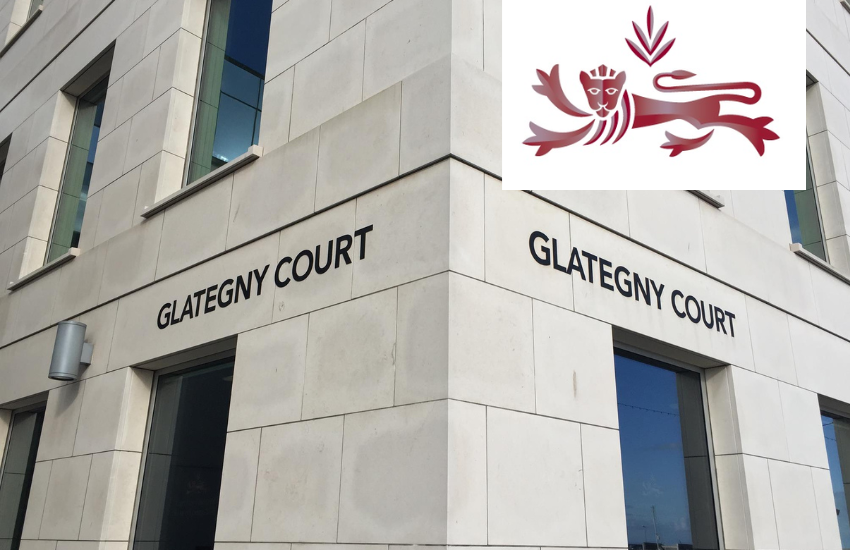


Light has been thrown on a regulatory investigation into the use of an alleged “slush fund” and finance staff working to hide the real owners of companies to avoid tax and push through property deals.
The investigation by the Guernsey Financial Services Commission, which shows how some of those involved were willing to turn a blind eye to the involvement of a fraudster in deals and in another instance ignore millions in suspicious money flowing into a company, is the subject of an ongoing appeal against fines and bans that followed.
The first stage of that in the Ordinary Division of the Royal Court saw the Deputy Bailiff Jessica Roland rule that the fines and bans were reasonable and proportionate.
One of the parties involved has now moved on to taking the case to the Court of Appeal.
The appeal involves three individuals and the Deputy Bailiff’s judgement anonymises those involved.

In March 2021, the GFSC’s Senior Decision Maker Richard Jones QC imposed the penalties.
One (x) was fined £15,000 and would have faced a two year ban from holding senior positions, but they were already sanctioned after a different regulatory investigation; another (y) was fined £100,000 and banned for ten years; another (z) was fined £40,000 and banned for six years.
The appeals were wide ranging and claimed there were serious errors made in the investigation and decision that followed and also included the first appellant arguing the whole process was flawed and it was impossible to get a fair hearing because the Senior Decision Maker was an officer of the GFSC.
That too was dismissed by the Deputy Bailiff.
The firm the trio worked for had around 120 clients/relationships and £154m of assets under management and concerns were raised about it after it was bought in March 2018.
Findings were also made against the firm and they were not appealed.
Among the evidence considered by the regulator was exchanges referencing a “slush fund” as the individuals worked to close a family’s trust.
One of the trio, Y, at one point admitted to trying to inflate their fees by referencing an GFSC insurance requirement that did not exist.
“At the end of the day we’re in business to make money, aren’t we?” he said in interview with the regulator.
It was March 2013 when payment instructions, which included £110,000 going into Y’s accounts, had a handwritten note attached headed up “slush fund”.
Other payments followed and in total Y received £245,210.86 of fees paid by the family for which the decision maker found there was “no rationale”.
Y claimed the money was paid to him for personal consultancy and believed the GFSC’s investigation did not dig far enough into correspondence and that it did not have jurisdiction because the trusts were managed in a different jurisdiction.
At one point an email from Y to X said: “Can you liaise on the amounts drawn down from the slush fund?”

The judgement details correspondence in 2017 and 2018 about the ownership of an entity ahead of an exchange of information agreement about to come into force.
Early in February 2017 Y suggests that there is a tax issue that could be avoided by declaring the entity as a gift from a father to the daughter who would then declare it an inheritance.
He wrote to a company in London in relation to a "hypothetical scenario" where a UK domiciled resident owns 100 per cent of an offshore company an in particular, “it is now proposed that he gives the company (or funds) to his daughter who lives in Country B, so I will check out that side of things over here”.
The GFSC’s senior decision maker found that Y was fully aware that the daughter was already the beneficial owner and that statement demonstrated a lack of probity and soundness of judgement.
Y had argued that a mistake had been made all along about the beneficial owner was.
There was more correspondence, including in March 2018 when Y said in response to a message that said their files shows the daughter was the [beneficial owner] so they needed to know how to deal with that: “I know that it is a problem but please bear with me because if, our nominees can sell to a structure where G [the daughter] is the ultimate owner, the end result is that the client is who we have documented as the client. (My twisted mind again).
"The reality here is that X fudged the issue on the basis that nobody would know about it. The problem is that they virtually hang you in Country B for undeclared offshore assets. F [the father] contends that he always wanted the assets in Entity A to end up with G so if we can engineer that in a declarable form without compromising ourselves... big fee. Rest assured, I won’t commit us to anything until everyone is comfortable.”
The Senior Decision Maker took the view that the whole issue of beneficial ownership and transfer to the daughter of what was already hers was to avoid tax.
Discussions about concealing who the beneficial owner of a company was should have been a “red flag” about how a client conducted its business affairs and whether they should have been retained.
A series of emails in 2017 are included in the appeal judgement in which Z discusses a mother (J) and son (L) and two entities incorporated in Guernsey.
The son was said to be a property magnate in London identifying property projects which would all require a special purpose vehicle.
In one of the deals it appears that the seller ran background checks which showed the mother was the director of a company or companies that had a poor track record.
The son questioned Z about why the company name was given.
“The idea is to cloak us as he says they don’t want to sell to us.”
Z responds saying that the trustee is the beneficial owner “up to a certain point”.
“J is the sole beneficiary and her interest is vested. More sophisticated cloaking would require a more sophisticated trust arrangement with discretionary beneficiaries."
The UK had introduced new legislation to identify beneficial owners of a trust.
In another email Z suggests different structures, like the company being beneficially owner by someone else or a life insurer as the owner.
The beneficial opener of both companies was subsequently changed at the request of the real owners to a known associate and was undertaken without documented rationale or understanding if the change was undertaken on commercial terms, the Senior Decision Maker found.
“The SDM considered that such actions were very serious, particularly given the recent external attention and focus on the Bailwick’s register, its accuracy and integrity of data."
Comments
Comments on this story express the views of the commentator only, not Bailiwick Publishing. We are unable to guarantee the accuracy of any of those comments.